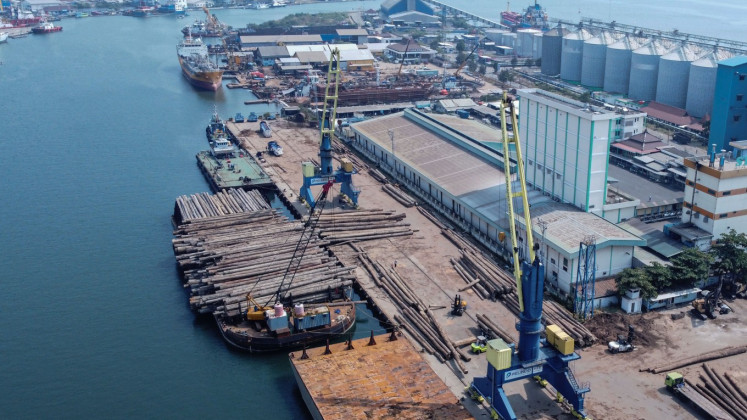Popular Reads
Top Results
Can't find what you're looking for?
View all search resultsPopular Reads
Top Results
Can't find what you're looking for?
View all search resultsJFX, ICDX launch tin and cocoa contracts
The Jakarta Futures Exchange (JFX) and the Indonesia Commodity and Derivatives Exchange (ICDX) launched on Thursday futures contracts for cocoa and tin, respectively, with the aim of setting global prices for the two commodities, of which Indonesia is one of the world’s largest producers
Change text size
Gift Premium Articles
to Anyone
T
he Jakarta Futures Exchange (JFX) and the Indonesia Commodity and Derivatives Exchange (ICDX) launched on Thursday futures contracts for cocoa and tin, respectively, with the aim of setting global prices for the two commodities, of which Indonesia is one of the world’s largest producers.
The JFX is opening trading for fermented cocoa bean contracts with a symbol of CC5 in two trading sessions from 8:30 a.m. to 12:30 p.m. and 4 p.m to 2 a.m. Each lot is worth 5 metric tons of fermented cocoa that is required to obtain the Indonesia standardization SNI and will be traded in rupiah. Cocoa contract months will be in March, May, July, September and December.
The JFX has appointed warehouses located in Makassar, Palu and Lampung as delivery points.
About two hours after cocoa futures trading began, the commodity’s price increased about 1 percent from its opening price. The cocoa price for a contract in March increased to Rp 20,080 (US$1.80) from the opening price of Rp 19,810; for May to Rp 20,290 from 19,990; for July to Rp 20,400 from Rp 20,160; for September to Rp 20,420 from Rp 20,260; and for December to Rp 20,570 from Rp 20,390. The total number of lots traded were 84.
Speaking on behalf of JFX president director Made Soekarwo, director Bihar Sakti Wibowo said the trading of cocoa contracts was aimed at pricing discovery and to provide hedging facilities to the cocoa and chocolate industries.
“Indonesia is the third-largest cacao producer after Cote d’Ivoire and Ghana. Indonesia is supposed to be able to set a cocoa price,” Bihar said.
At this moment, the price of cocoa is set at the New York Mercantile Exchange (NYMEX) and the Intercontinental Exchange (ICE). “The cocoa futures trade will also help to improve the quality of our cocoa as most of our produce is non-fermented,” Bihar said.
He said the JFX expected the cocoa monthly futures trade to reach 1,000 lots during the next three months.
Separately, the ICDX, which trades palm oil and gold, launched a physical tin contract Thursday to establish an alternative to the benchmark of the London Metal Exchange (LME).
The market will also accommodate a futures trade of tins. Initial transactions of tin at the ICDX will begin on Jan. 12. At the ICDX, tin contracts will be coded as INATIN and offered in 5-metric tons lots priced in US dollars. Tins futures trading will be open for 15 minutes, from 2:30 p.m. until 2:45 p.m.
Deputy Trade Minister Bayu Krisnamurthi, who also attended the launching of the Indonesia Tin Market, said that tin futures trading at the ICDX would enable Indonesia, as the largest tin producer, to set the benchmark as an alternative to the LME, which was the international point of reference.
“Indonesia, which controls about 70 percent of the world’s tin production, should have a strong bargaining position in the formation of the price of the commodity,” Bayu said. (rcf)










